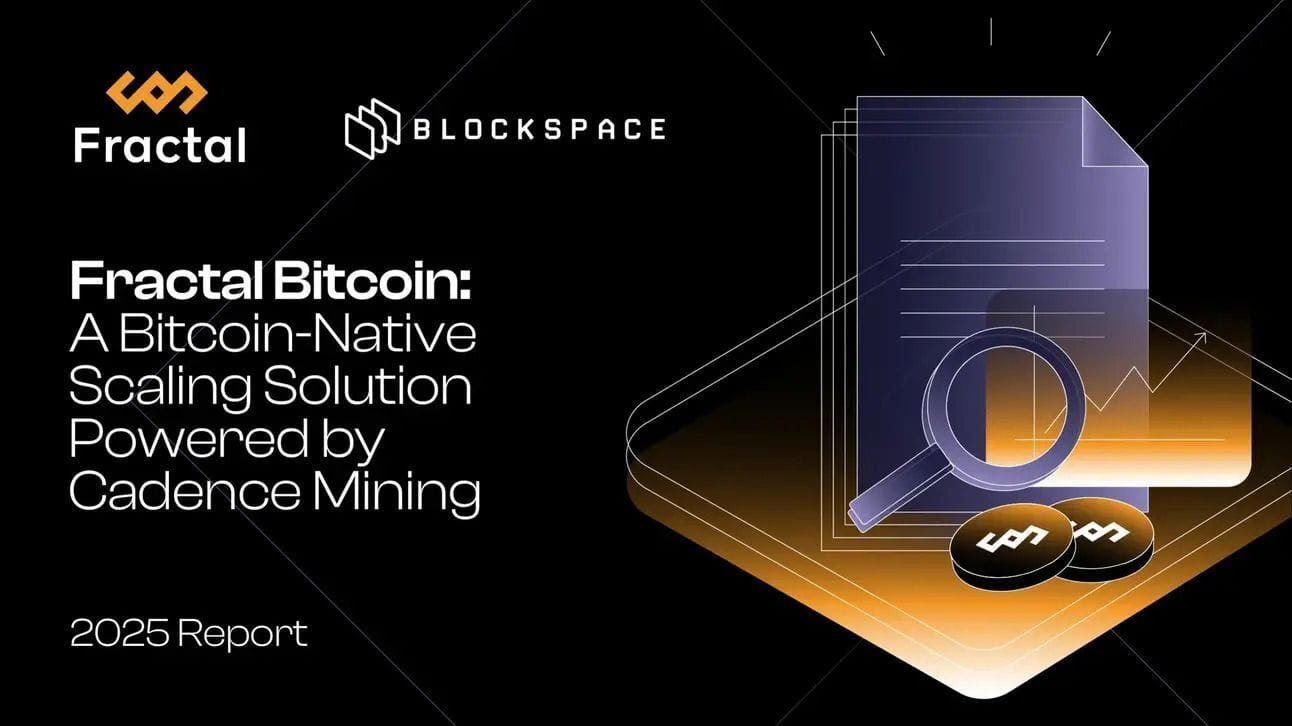- The Blockspace Newsletter
- Posts
- Strategy is at it again
Strategy is at it again
Plus, the bizarre story of a fake Sprint Car owner and...Bitcoin Puppets?

Loving Blockspace? Reply with your favorite read from this week!
Had enough? Unsubscribe here.
Presented by
Fractal Bitcoin
Strategy could soon have $300-400 millions in annual dividends to pay under the preferred stocks’ current agreements, so we can’t help but wonder, where is that yield going to come from?
Plus, a normie turns the tables on a Bitcoin NFT collection.
Market Opens
BTC $116K 1.7% GOLD $3,338 1% MSTR $414 0% COIN $396 0% | MARA $17.26 1.7% CLSK $12.34 1% RIOT $14.69 2.4% CORZ $13.69 1.4% |
Fractal: Scale Bitcoin + Boost Miner Revenue.
Is Bitcoin’s most active scaling solution already here?
Fractal’s rapid hashrate growth and transaction growth suggest it might be.
A new report by Blockspace Media breaks down Fractal Bitcoin, the chain that’s quietly achieved:
🔸 ~80%+ of Bitcoin’s hashrate via merged mining
🔸 11 M+ daily transactions (comparable to Solana & Base)
Powered by Cadence Mining, a novel hybrid block production model, and seamless onboarding via UniSat, Fractal is emerging as Bitcoin’s most used innovation layer.
Strategy launches Stretch, a new preferred stock offering
Strategy is at it again with another series A preferred stock offering. Strategy intends to issue 28,011,111 shares of the equity, Stretch (STRC), for a targeted raise of $2.47 billion at $90 per share. The stock will initially pay a 9% dividend and follows Strategy’s other preferred share offerings for STRK, STRF, and STRD. - link
OUR TAKE: Michael Saylor is so unfathomably giga-bullish on bitcoin, that he’s willing to – gotta say it – stretch out Strategy’s equity in any way he can.
Once the STRC IPO is complete, Strategy will have four of these preferred stocks floating around. They all pay dividends (anywhere from 8-10%). And therein lies the question: how long until Strategy overextends itself with these offerings?
The short answer, of course, is that it depends on what bitcoin is doing.
If you’re new to this game, the rules are simple. Strategy raises capital, either with debt financing (usually via convertible notes) or by selling shares. The company plows that cash into bitcoin, Strategy’s commons stock (MSTR) goes up, and Saylor and friends leverages the company’s boosted valuation to raise more capital. Rinse and repeat. A financial perpetual motion machine, right?
Obviously this has worked so far, but Strategy continues to raise capital in new – and admittedly, creative – ways that increase its liabilities. Originally, Strategy issued convertible notes – debt instruments that can be converted into equity at a predetermined strike price – to buy bitcoin. Then came the at-the-market stock offerings for MSTR shares. And now, the quadruplet of preferred stocks, STRK, STRF, STRD, and STRC.
Strategy has leaned on common stock and preferred stock issuance for fundraising in Q2 and so far in Q3, rather than converts. Some points in favor of this new approach: Strategy isn’t assuming additional debt with new convertible notes, which carry the risk that its share price will be below the convertible price in the notes, meaning Strategy has to pay back the debt; additionally, the preferred stock issuance taps a different, yield-focused investor base to attract fresh capital.
But the preferred shares come at a cost. Barron’s estimates that all four dividend-paying stocks will cost Strategy $300-400 million per year. That money has to come from somewhere, and it’s unlikely to come from Strategy’s core software and consulting business (Strategy earned $77.1 million in gross profit in Q1, which wasn’t enough to even cover that quarter’s $92.4 million SG&A).
So realistically, unless Strategy turbocharges revenue from its core business, the cash for the dividends has to come from further dilution, debt, or – heaven forbid! – selling bitcoin (something Saylor says you should never do). Now, the good news is that Strategy can alter the dividend payout percentage on a monthly basis within a legally permissible range. But they also can’t cut the rate to far, which would risk alienating investors.
All of these problems are exacerbated if bitcoin enters a prolonged drawdown. But until and if that happens, well, number go up means Strategy can keep stretching these capital market instruments to its benefit.
-CMH
A Bitcoin Puppets themed sprint car takes the track. But who paid for it?
Ordinals collection “Bitcoin Puppets” crowdfunded a custom branded wrap of a sprint car in anticipation of racing in the King’s Royal Main Event–one of the most prestigious racing events in the US.

The event featured 4 consecutive nights of racing sprint cars and a grand prize of $200,000 on the final night.
On night three, the Puppets car went viral on social media. But on day 4, the “owner” of the car simply disappeared.
What happened?
OUR TAKE: This is one of the wildest stories in Bitcoin this summer, full of crazy characters, cartoon avatars, and mishaps.
The facts: Bitcoin Magazine’s Michael Markle saw an opportunity to brand a sprint car for the King’s Royal with Ordinals collection.
Markle and other Puppets representatives paid the owner of car #69–because of course it’s that number–Ron Rutherford $15,000 to wrap car #69 with their classic, low-grade cartoonish branding. The puppets community quickly crowdfunded the sum.
Rutherford also procured Tyler Walker, a seasoned sprint car driver who hadn’t been racing in recent years due to substance abuse and stints of homelessness. In a viral interview last week, Walker enthusiastically thanked “the Bitcoin Muppets [sic]” and reflected on his journey to sobriety.
After a banger of a night three and great performance by Walker on the track, the Bitcoin Puppets car started going viral on social media. “It was easily the most talked about car, some of the highest engagement on twitter we’ve seen,” said Markle on a Twitter space. “I had kids running up to me [at the race] saying they love this car, we want the merch”
However, on Saturday morning of the fourth day, the car’s owner was nowhere to be found, and the car’s race crew claimed their hotels hadn’t been paid for as Rutherford claimed.
The crew and Puppets community members put the pieces together that Rutherford wasn’t, in fact, the owner of the car – that Rutherford had been robbing Peter to pay Paul, and he never had any intention of racing the Puppets car in the main event on Saturday night.
According to Bitcoin Puppets representative Hills, at one point during the weekend, Rutherford was reportedly attempting to sell the car (which he didn’t own) and shake down the Puppet reps for more sponsorship money “so they could race the final night.”
At time of writing, it’s not clear to us who actually owns the car and what Rutherford’s relationship with them is, but it’s clear that Rutherford has been acting as General Manager and claimed he owned the car.
In a poetic role reversal, this is kind of like a normie rugging an NFT collection. However, anyone familiar with the Puppets’ brand of avant-garde internet culture knows: you don’t piss off the internet.
Currently some representatives from the Bitcoin Puppets are in contact with the driver, Tyler Walker, to talk about other ways to collaborate.
I’m skipping over a lot of details and hilarious anecdotes, but overall I would say that the whole saga has actually been a net positive for the Puppets community – everything was very culturally on-brand. If you want more juicy details there is apparently a documentary crew who has been following Tyler Walker for a while and will put out a film documenting these antics and more.
-CBS
How Seasons Shape Hashrate (and Hashprice)
From China’s wet seasons to Texas’ 4CP curtailments, summer leaves a measurable mark on mining. Uncover the signals, on-chain impacts, and market shifts miners should watch.
In the News
Join our Telegram chat to get the latest headline in Bitcoin-related equities.
Roman Storm's Defense challenges Prosecution's evidence in Tornado Cash trial
Tornado Cash co-founder Roman Storm’s defense team questions the prosecution's evidence linking stolen cryptocurrency to the platform after an IRS agent admitted under cross-examination that he could not definitively prove that the funds from a scam victim were deposited into Tornado Cash. This evidence casts doubt on the prosecution's claims - link
Blocksteam’s Liquid Network to activate Simplicity upgrade
Bitcoin sidechain Liquid will upgrade next week. The network, developed by Blockstream, will add Simplicity – a next generation smart contracting language. - link
Elon Musk’s SpaceX transfer $153 million in BTC with first move in 3 years
According to Arkham, SpaceX recently transferred 1,308 BTC valued at ~$153 million in its first on-chain Bitcoin activity since June 2022. Arkham says the company retains about 6,977 BTC in the original address, worth around $815 million, ranking it in the top 20 corporations by Bitcoin holdings. - link
Tweet of the Week
Some serious infrastructure for liquid cooled Blackwell GB200s at xAI’s soon-to-open Memphis, TN datacenter. Gotta love that color scheme (any LSU readers in the house?).
Cable pr0n of @xai GB200 servers at Colossus 2
— Elon Musk (@elonmusk)
5:49 PM • Jul 22, 2025
Blockspace Podcasts
For this week’s Mining Pod news roundup, Will, Colin, and Matt discuss Antalpha’s CEO becoming the chair of Cango, how the Big Beautiful Bill affects bitcoin miners, OpenAI and Oracle’s 4.5GW datacenter plans, last week’s record crypto ETF inflows of $4.39B, and Joe McCann's Solana treasury SPAC.

Did you know that tomatoes are the most popular residentially grown vegetable in the U.S? (Yes, we know it’s a fruit, but it will always be a vegetable culinarily, ok?). If you’re growing tomatoes this season and they are suffering from blossom-end rot, you can help your calcium-deficient tomatoes by feeding them bonemeal or lime. And if the soil’s calcium level isn’t the issue, make sure you’re watering consistently and not under or over watering your crop.
-CMH & CBS


Reply